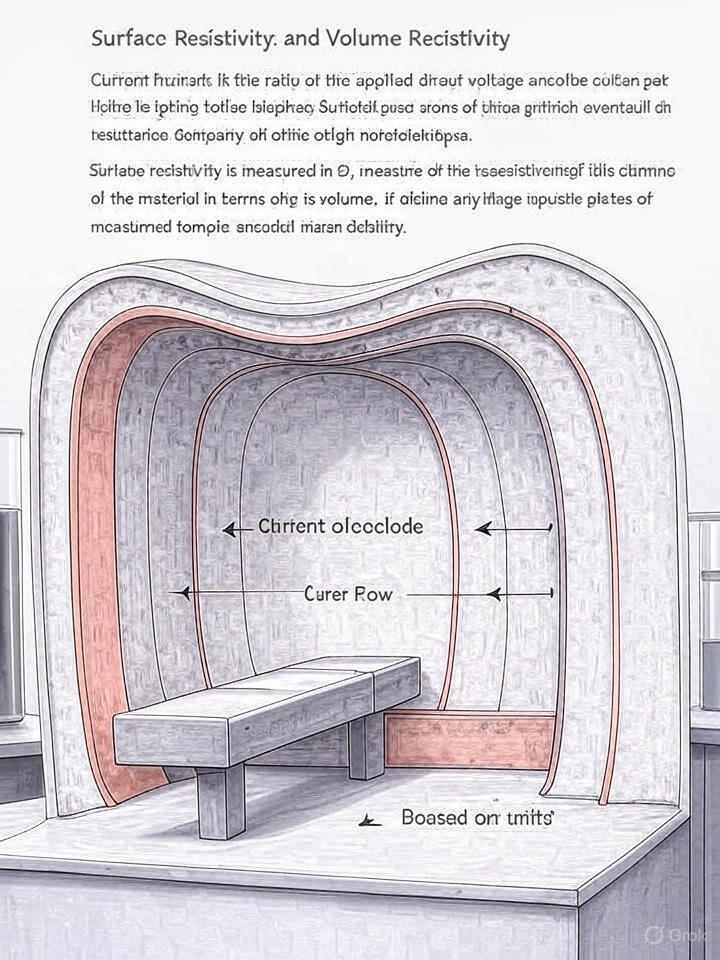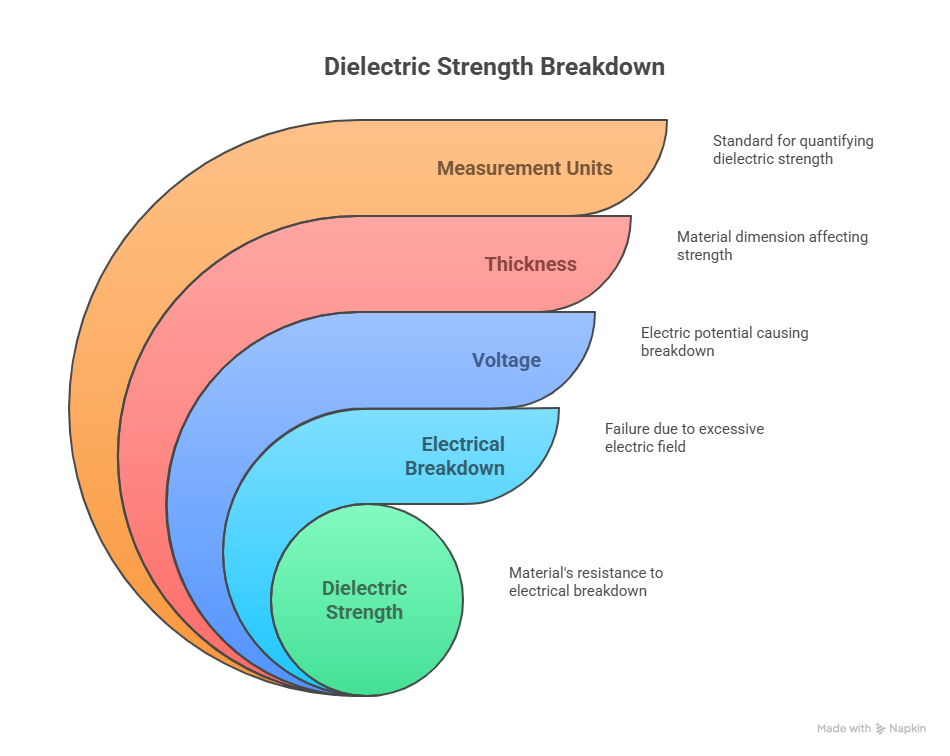Determination of Surface & Volume Resistivity
The determination of surface and volume resistivity is essential in understanding a material’s electrical properties. These characteristics dictate the material’s ability to resist current flow on its surface and within its volume. Engineers and scientists rely on accurate measurements to select appropriate materials for various electrical applications, ensuring the reliability and efficiency of devices and systems.
Volume resistivity and surface resistivity are two very important electrical properties that describe how a material resists current flow through its interior or along its surface.
Surface resistivity: It is the ratio of the applied direct voltage and the resulting current along the surface of the material per unit width. The surface resistivity is a measure of the resistance of the material to a surface flow of current. Surface resistivity is measured in Ω.
Volume resistivity: The volume resistivity is a measure of the resistance of the material in terms of its volume. A voltage is applied across the plates and the current is measured to allow calculation of the volume resistivity. Volume resistivity is measured in Ω.cm.


Significance :
When we study about electrical properties of polymers then surface and volume resistivity plays an important role for insulation behavior.
Low surface resistivity is important in applications where static electricity dissipation is required. Engineering plastics are inherently very good insulators with surface resistance values typically in the range 1014 to 1018 ohm in base resins
The upper limit for surface resistivity of a polymer considered to be considered ‘static controlled’ is about 1012 ohm.
Decreased resistivity (increased conductivity) is often imparted to plastics by additives such as conductive carbon fibers or by surface treatment of finished products.
Test method: ASTM D 257, BS 2782, BS 3815, ISO 1325
Specimen Dimension: The specimen will be a sheet of 1 to 3 mm thick, at least 10 mm large than the diameter of the unguarded electrode.
Equipment Details:
For most material the volume resistivity will be greater than 109 Ω cm and the measured resistivity using the electrodes will be about 109 Ω. Measurement in this range will require the use of a “Megaohmmeter” drawing “bias” current less than 10-12 A.
Such instruments are almost invariably provided with a third terminal for connection to a guard electrode.
Electrode System.
Generally the most convenient electrode system will be a coaxial assembly similar to that shown in above figure given below. In this assembly, the electrodes T2, T3 are usually mounted rigidly on a fixed insulating base, T, being demountable for insertion of the specimen.
The assembly may be employed for sheet material in thickness greater than about 25 µm, with an upper limit of about 3mm.
Guarded electrode diameters are 50 & 150 mm using a guard gap of about 1 mm, the unguarded electrode being about 10 mm larger than the guard.
In many cases, it is necessary to apply “intimate” electrodes to the surfaces of the specimen. These are usually (6-25 µm) aluminum foils in conjunction with a conductive lubricant. Other intimate electrodes may be used for example vacuum deposited aluminum or conductive paint


Test Procedure:
- The specimen is prepared in accordance with the particular test procedure being employed and is then conditioned as necessary.
- Any necessary intimate electrodes and contacting medium are applied. It the intimate electrodes are applied by vacuum metalizing, the specimen is conditioned after application.
- The specimen is mounted in the specimen holder/electrode assembly and connections made to the measuring instrument.
- Test potential is applied via the ‘charging’ position of the instrument switch for at least about 10% of the specified electrification time (usually about 5 seconds).
- The instrument connection switch is moved to the “read” position and the range switch set to an appropriate level at least 10 seconds before reading the resistance at the specified electrification time. The time of electrification is usually 1 min. and the applied voltage is 500+ 5 Volt. The indicated resistance will not usually be constant but will steadily increase, at a rate dependent on the test material.
- If necessary, the capacity of the specimen/electrode assembly is measured.
Calculations
Volume Resistivity
1. The Volume Resistance (Rv) is noted from the meter.
2. The Area of electrode (A) is calculated.
3. The thickness of the specimen (t) is measured.
4. Volume Resistivity is calculated by
following formula ρv = Rv A/t
Surface resistivity
1. The Surface Resistance (Rs) is noted from the meter.
2. The parameter of guard electrode (p) is calculated.
3. The gap between the electrodes (g) is measured.
4. Surface Resistivity is calculated by
following formula ρs = Rs p/g
Factors Influencing:
1. A small amount of impurities in a polymer can considerably change its electrical resistance.
2. Prolong uses of an insulator may cause degradation and adversely affect the insulation resistance following the chemical charge which takes place in the polymer.
3. The resistivity of the polymer is also affected by the type and amount of additive used.
4. The nature and geometry of electrodes.
5. Magnitude and time of applied voltage.
6. Test conditions i.e. temperature & humidity.
7. Molding defects in the test specimen.
8. Moisture content in the test specimen.
Conclusion :
Resistivity is a key characteristic of a material that measures how much it opposes the flow of electric current.
As an intrinsic property, resistivity depends solely on the material’s composition and temperature, irrespective of its shape or size. In practical applications, particularly with insulators and semiconductors, electric current may flow through both the material’s bulk and its surface. This gives rise to the concepts of volume resistivity and surface resistivit
Volume resistivity and surface resistivity are vital electrical characteristics that define a material’s opposition to current flow within its interior and along its surface, respectively.
Grasping these properties, their measurement methods, and the factors that affect them is key to selecting suitable materials for different electrical and electronic applications.









Post Comment